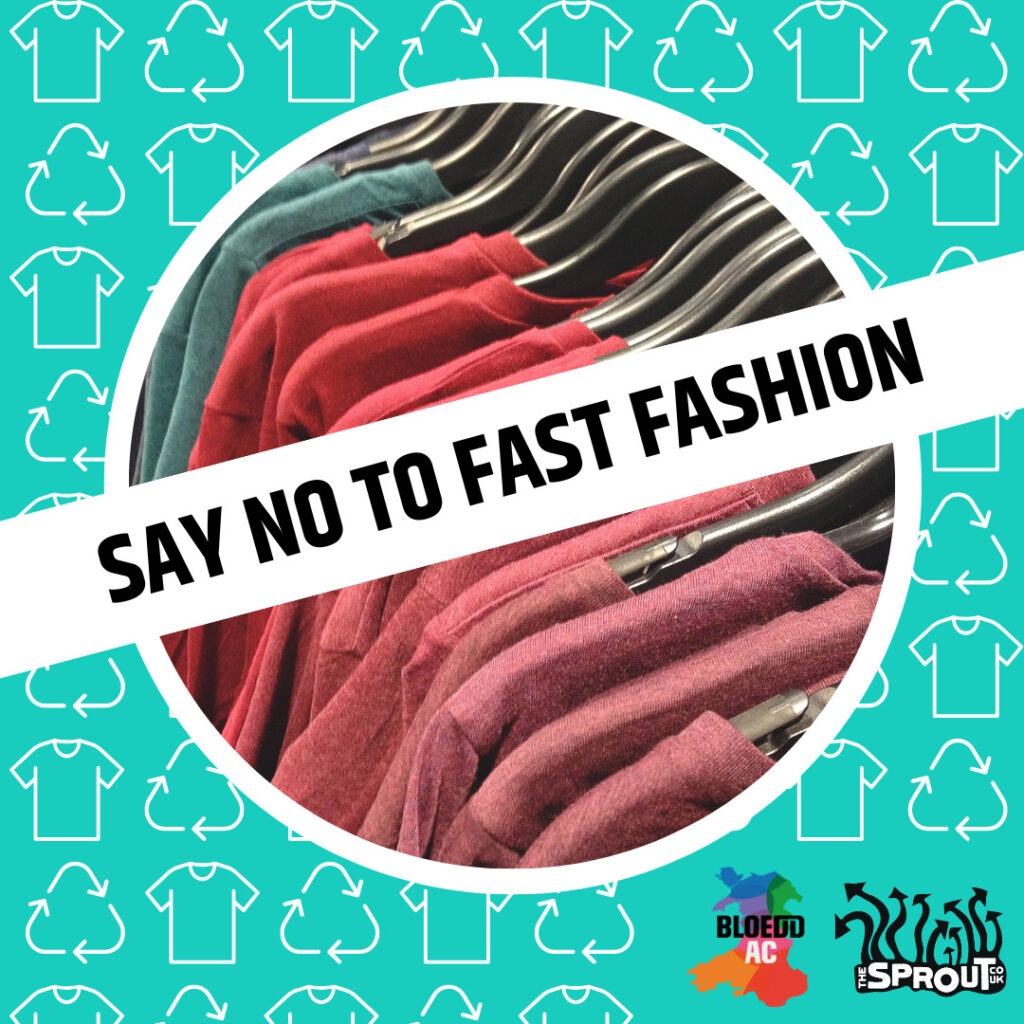When I was younger, my mum would take me to car boots and charity shops to find ‘deals’ and ‘bargains’, and so the love of second-hand clothes began.
With lack of age came naivety and unawareness of the impact the fast fashion industry had on things. Since becoming ‘older and wiser’ and so I am aware of the impact the fast fashion industry has on the environment, people and climate. Now, I shop not just for ‘bargains’ and ‘deals’, but for better working conditions, less pollution, greener environment, and sustainable clothes.
I believe that not enough people are aware of the negative affect the industry causes. So, in this blog, I am going to shed some light on the not so ‘pretty patterned and totally trendy’ industry.
Wasteful production
Did you know that on average, you don’t wear 50% of your wardrobe? And the stuff you do wear, you wear only 7 times! This doesn’t sound too bad right? But this is the same wardrobe that is a part of:
- 10% of the worlds carbon emissions
- 11kg of textile waste (per person each year)
- 52 micro collections per year, instead of the usual 2 seasons
There are now an astonishing 400% more clothes being produced compared to 20 years ago, of which most will probably end up in landfills. So many new styles, colours and patterns! Spoiler alert – clothes from fast fashion companies do not biodegrade in landfills.
Instead, they let off nasty, poisonous gases such as C02 and methane (28 times worst for emissions than C02). These then create greenhouse gases which contribute toward getting one step closer to a climate catastrophe. But that’s okay, as long as you’ve got a nice new outfit for the weekend… or is it?
Ethics of fast fashion
400% more clothes mean lots of people have a job. Let’s take a minute to imagine this job….
- 14–16-hour shifts, with some days having no limit on the hours you work
- Extremely low pay, just enough to feed yourself for the next day
- Frequent injuries that you can’t report, because you need to make money
- When allowed, the breaks are so short – you blink, and they are gone
- Working in cramped environments
- A continual workload, feeling like it will never end
Is this a job you would want? Because it is a job some people must have to feed their families, pay bills and obviously make new styles, colours and patterns…
Animals affected by fast fashion
The animals and sea life are also not safe. Fabric dyes, plastic fibres and chemicals pollute the waters and using fur, cotton, and wool harm the animals.
- 115 million animals are used to experiment on in labs
- Animals are used such as rats, rabbits, dogs, cats, guinea pigs and birds – all creatures that could be someone’s pet…
- They can also be endangered animals involved; animals that should be protected, not an item of clothing.
- Animals can also caged, trapped, tested on and sadly, often skinned alive for textiles.
And we would be horrified if this happened to humans, so why allow it to happen to animals? This happens to around 100 million land animals every year.
Marine life
Marine life is also heavily affected by the fashion industry. The industry accounts for 20 to 35% of all the micro-plastics that flow into the ocean.
Micro-fibres are tiny pieces of plastic that are in clothes like cotton and polyester. When eaten by marine life, it causes harm to their insides, leading to heart problems, and birth defects to the little sea creatures.
Here are a few ways you can reduce micro-fibres:
- Wash in full loads
- Avoid delicate settings on your machine
- Line-dry your clothes
- Consider installing a filter on your washing machine or using a laundry bag
Water Pollution
79 trillion litres of water are used annually, which contributes to about 20% of industrial wastewater.
Chemical dyes are the biggest culprit for 20% of global water pollution.
One the clothes are made using water, which is now contaminated, it is put back into the rivers and seas.
Concluding thoughts
Because as the fast fashion industry gets bigger, brighter and more brilliant, the world gets warmer, the workers exploited, and the waters contaminated.
So when you walk past your favourite high street brands, check inside a charity shop first, where clothes are preloved. By wearing them, you reduce landfill, and pollution, whilst saving animals, looking great, and wearing a unique item with a story that no one else has!
But if you’re not keen on the whole second-hand hand idea, clear out your wardrobe… because you for sure don’t wear 50% of it. Send your unloved and unwanted items to your local charity shop or post them to online apps such as Vinted or Depop. Whatever you do, just don’t throw them away! Because one person’s trash, is another person’s treasure!
Related Information
The Future is in our Hands is a campaign run in collaboration with Bloedd Amgueddfa Cymru, a collective working alongside 16–25 year olds to experiment, create and innovate.
Read more from the Future is in Our Hands campaign.

